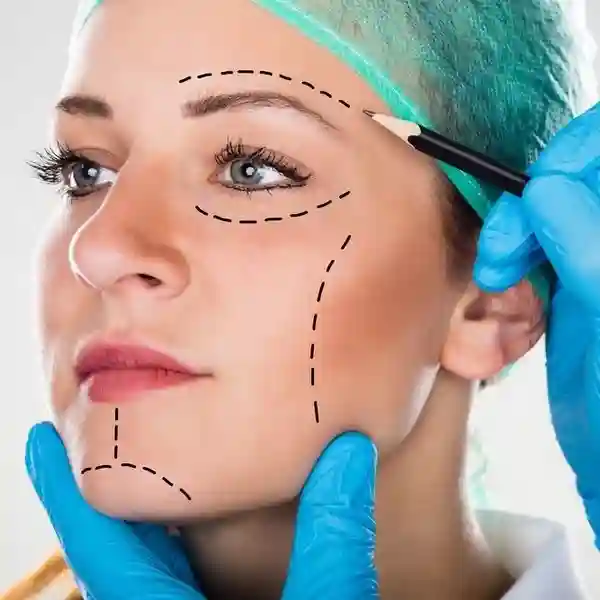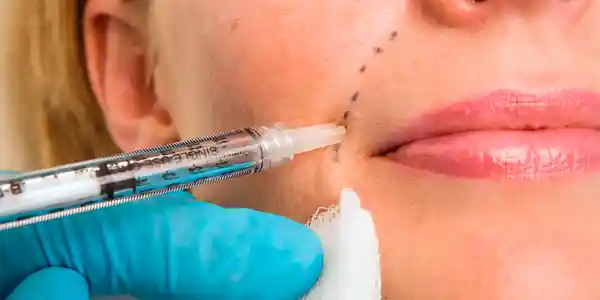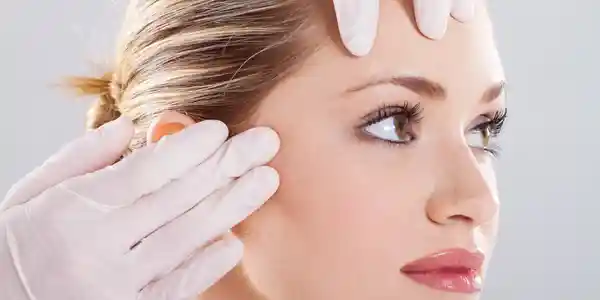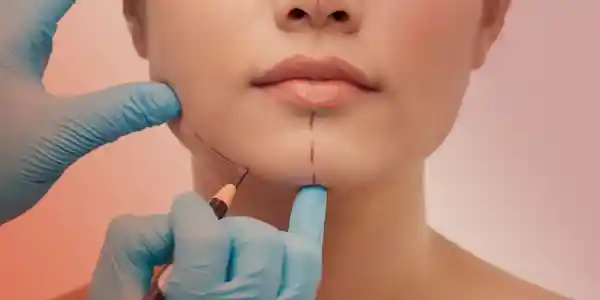Introduction:
A forehead lift or brow lift is a cosmetic treatment used to treat sagging brows, wrinkles in the forehead, and other aging symptoms in order to rejuvenate the upper face. Although they both focus on related regions, the methods and approaches used in each operation are different. This article will explore the fascinating history, general process, different approaches, and advantages and disadvantages of forehead lift and brow lift surgeries.

History of forehead lift or brow lift
The practice of forehead lifts, sometimes referred to as forehead rejuvenation or forehead plasty, has a long history. For millennia, human civilization has included the desire to improve the appearance of the forehead and eyebrows. But throughout the past century, these processes’ current approaches have undergone tremendous evolution

Early Techniques:
Makeup, wigs, and headgear were some of the ways that individuals in the past improved the appearance of their foreheads and eyebrows. These solutions frequently only addressed the surface problems.
Early Surgical Techniques:
In the early 20th century, the first surgical operations to elevate the forehead and brows were recorded. These early methods comprised raising the skin to tighten the forehead and raise the eyebrows by creating incisions in the scalp. But there was a significant chance of problems and these operations were frequently invasive.
Current Methods:
Since their development in the middle of the 20th century, modern methods for forehead and brow lifts have undergone constant development. Higher quality and more natural-looking results are achieved using less intrusive and more advanced treatments than with older ones.

Non-Surgical solutions:
There are now non-surgical solutions available for forehead and brow rejuvenation in addition to surgical techniques. These include non-surgical injectable procedures like Botox and dermal fillers, which can help elevate and smooth the eyebrows and forehead.
All things considered, the history of forehead and brow lifts is one of constant innovation and advancement. These days, people can obtain a more young and rejuvenated appearance with less risk and downtime because to procedures that are safer, more effective, and more widely available than ever before.
General procedures:
Both brow lift and forehead lift operations are similar in that they seek to revitalize the top face and enhance the appearance of the eyebrows and forehead. Below is a broad summary of the steps involved:
Incisions:
To reduce obvious scarring, the surgeon will make incisions on the scalp, usually in the hair-bearing region or along the hairline. To make room for the endoscope and other surgical equipment, multiple tiny incisions may be needed during endoscopic treatments.
Tissue Adjustment:
Next, the forehead and brows’ underlying tissues will be lifted and repositioned by the surgeon. To create a more young and revitalized appearance, this may entail trimming extra skin, tightening muscles, and repositioning the eyebrows.
Recovery:
Following the procedure, the patient will be kept under close observation in a designated area until they are well enough to return home. In the days after the treatment, some swelling, bruising, and soreness are usual, but these side effects should eventually go away.
Closure:
The wounds are stitched up using sutures or staples after the necessary modifications have been performed. The surgeon will make sure to position the incisions to minimize scarring and produce the best possible cosmetic outcome.
Follow-Up:
Following surgery, patients usually schedule a follow-up consultation with their surgeon to assess how they are recuperating and to make sure everything is going as planned. The surgeon might offer extra guidance on aftercare and recuperation.

Various techniques:
Conventional Brow Lift (Coronal Brow Lift):
In order to reach the underlying tissues of the forehead and brow, this procedure entails creating a lengthy incision across the scalp, usually inside the hairline. In order to smooth out forehead wrinkles and raise the brows, extra tissue is eliminated and the forehead skin is elevated. While minimally invasive procedures may lead to shorter recovery times and less obvious scarring, traditional brow lift surgery offers total treatment.
Endoscopic Brow Lift:
This procedure makes minimal damage to surrounding structures by visualizing and manipulating the underlying tissues through the use of tiny incisions and an endoscope, a thin, flexible tube equipped with a camera. Compared to standard brow lift surgery, this minimally invasive method leaves fewer scars, causes less discomfort after surgery, and requires a shorter recovery period.
Temporal Brow Lift:
The outside corners of the forehead and eyebrows are lifted and repositioned using this method. In order to reach the tissues, it entails creating tiny incisions in the temporal region or hairline. This technique offers delicate yet efficient rejuvenation with less recovery time and scars.
Direct Brow Lift:
This procedure includes creating an incision just above the eyebrows to remove extra skin and elevate the brows. It is best suited for individuals with thick brows or severe forehead wrinkles. This procedure may lead to more noticeable scarring and possible changes in eyebrow shape, but it also provides instant elevation and correction.
Mid-Forehead Brow Lift:
To access and elevate the brow tissues, this less usual procedure entails making an incision along the mid-forehead. Although compared to other methods, it may be more noticeable when scarring is present, making it appropriate for people with certain aesthetic issues or preferences.
Pretrichial or Trichophytic Brow Lift:
This method allows for scarring to blend in with the natural hairline by making the incision along the hairline. This method is very helpful for people who have high hairlines or who are worried about noticeable scars.
The choice of approach relies on various criteria, including the surgeon’s experience, the patient’s anatomy, and aesthetic goals. Each technique has particular advantages and considerations. The plastic surgeon will assess the patient’s demands throughout the consultation phase and suggest the best course of action to accomplish the intended goals with the least amount of risk and maximum effectiveness.
Benefits, Comparisons, and Considerations:

Traditional Brow Lift: Also known as a Coronal Brow Lift
Benefits:
Offers thorough brow ptosis and forehead wrinkle treatment. permits complete access to the tissues underneath for accurate manipulation and realignment.
Considerations:
Compared to minimally invasive methods, this procedure involves a longer incision along the scalp, which may result in more obvious scars. lengthier healing periods are necessary because of the degree of tissue manipulation.
Complications:
Scarring, hairline alterations, nerve damage, asymmetry, and loss of feeling are possible hazards.
Endoscopic Lift of the Brows:
Benefits:
Less invasive procedure with less scars and smaller incisions. provides less pain following surgery and faster recovery than conventional brow lift surgery.
Things to think about:
Compared to standard methods, a limited amount of correction would be possible due to restricted access to the forehead tissues. calls for specific education and proficiency in endoscopic surgery.
Complications:
While relatively less frequent than with older procedures, risks include scarring, hairline alterations, nerve injury, asymmetry, and loss of sensation.
Temporal Lifting of the Brows:
Benefits:
Minimizes downtime and scarring while targeting the outer corners of the forehead and eyebrows to provide subtle yet effective rejuvenation, can be used in conjunction with further procedures to provide complete facial rejuvenation.
Considerations:
May not offer as thorough of a remedy as other procedures, and limited to addressing particular areas of difficulty.requires careful selection of patients in order to guarantee best results.
Complications:
While less frequent than with more invasive procedures, possible hazards include nerve damage, asymmetry, scarring, hairline alterations, and loss of sensation.

Straight-forward Brow Lift:
Benefits:
Instantly raises eyebrows and smoothes out creases in the forehead. Suitable for people who might benefit from direct tissue excision, such as those with thick brows or severe forehead wrinkles.
Considerations:
May cause changes in eyebrow form and result in more noticeable scars. Patients who have particular aesthetic concerns or who would rather have less intrusive treatments may find this option unsuitable.
Risks for complications include observable scarring, asymmetry in the eyebrows, alterations in the hairline, damage to the nerves, and loss of feeling.
Lifting the mid-forehead brow:
Benefits:
Provides an alternative method for treating particular aesthetic issues, including asymmetry or wrinkles in the middle of the forehead. can be tailored to each patient’s specific needs.
Considerations:
Because the incision is placed at the mid-forehead, this procedure may leave more noticeable scarring than other methods. meticulous preoperative planning is necessary to provide the best possible scar location and concealment.
Complications:
There is a chance of obvious scarring, altered forehead shape, altered hairline, nerve damage, and loss of feeling. In order to monitor healing and handle any issues, a close follow-up with the surgeon is required.
Trichophytic or pretrichial brow lift:
Benefits:
Reduces apparent scarring and improves aesthetic results by allowing the incision to be made near the hairline. Ideal for people who worry about having obvious scars or have high hairlines.
Considerations:
Careful preoperative assessment is necessary to guarantee operation compatibility and ideal scar location within the hairline. In order to evaluate hairline changes and scar healing, close postoperative surveillance is required.
Complications:
Risks include asymmetry, loss of feeling, visible scarring, changes in the direction or position of the hairline, and nerve injury. To reduce these risks, appropriate patient selection and surgical technique are essential.
Complications and risks:
Although forehead lift and brow lift procedures are usually safe when carried out by a licensed and skilled plastic surgeon, there are a few possible dangers involved. These include:
Damage
alterations in hairline
damage to the nerves
Inequalities
crooked eyebrows or eyelids
Absence of feeling
Unsatisfactory visual outcomes
Conclusion:
Surgery to raise the brow and forehead can be a good way to rejuvenate the upper face and give it a more youthful appearance. Under the guidance of a qualified and experienced plastic surgeon, patients can make educated judgments and obtain satisfactory outcomes by studying the background, general process, different techniques, and related aspects of these treatments. During the consultation process, it’s critical to talk about each patient’s specific goals, worries, and expectations in order to create a customized treatment plan that meets their specific requirements and intended results.
- All Posts
- Uncategorized

Dr. Daniel Davidson, MD, MBA Introduction: The goal of success for businesses nowadays is to establish a global brand because…

Dr. Daniel Davidson, MD, MBA Introduction: Stem cells have captivated the imagination of scientists and the public alike for their…

Dr. Daniel Davidson, MD, MBA Introduction: Platelet-rich plasma (PRP), fat grafting, and dermal fillers made from natural sources are examples…
